7 mistakes when transporting children in the car
Here are the most frequent mistakes of parents when transporting a child in the car.

A recent study shows that almost every second child is properly secured in the vehicle. This can lead to serious injury during emergency situations or in case of an accident. Someone incorrectly puts the child in a child seat. Anyone not friends with the head, putting the kids in the car without the chair. We bring you seven of the most frequent and common mistakes made by parents when carrying their child in the car.
According to the study, in Germany, 48 percent of children in the car is wrong. And we are not talking about those irresponsible drivers who transport children without a special seat, breaking the law. The worst thing is that we are talking about the drivers who transported children in the chair.
Incorrect fastening of the straps – the most common mistake
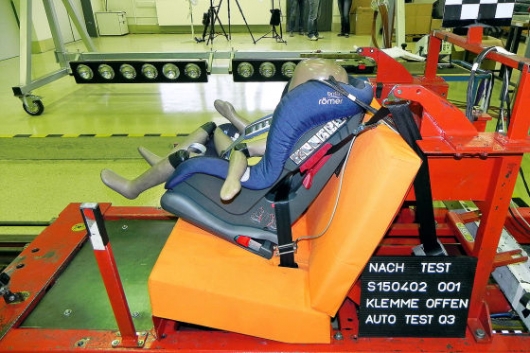
Most drivers, putting child in child seat, or not tight tighten the belt lumbar or lumbar straps do not pass through necessary for the safety of the hole in the chair.
This is especially true of child seats group 0/0+ (baby seats for children aged 0 to 12 months and weighing up to 13 kg) or group 1 (child seats, designed for children aged 9 months. to 4 years and weighing from 9 to 18 kg).
The most frequent error of parents when you commit children in such chairs is that pelvic belts are interchanged frequently with a shoulder.
Here is an example of how much can be serious consequences as a result of mismounting of the straps when transporting a child. This video was created by the German Association of insurers (UDV), which has conducted crash tests with child seats to show drivers the consequences of any errors the usage of children in a child seat:
Crash-test child seats: seven mistakes parents when transporting children in the car

The company AUTO TEST in conjunction with the company DEKRA has modeled seven of the most common mistakes when transporting children in a child seat. All tests were conducted in frontal impact at speeds of 50 km/h in accordance with the standard ECE R44. Based on the sensor readings that were assigned for children’s dummies, the test results were evaluated the children’s doctor-surgeon. The results of these tests revealed the seven most common mistakes when transporting children in the car.
Here are the most dangerous and common mistakes that make irresponsible parents, transporting their children:
Mistake # 1: a child on an adult’s lap
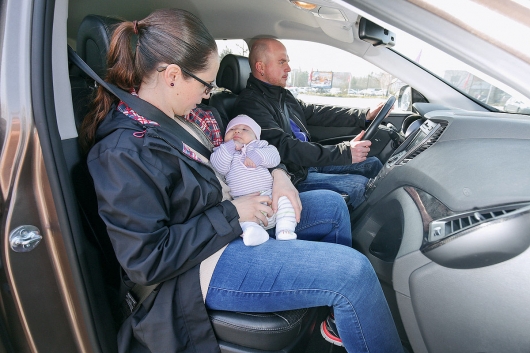
All drivers know that transporting a child without child seat not only because it is prohibited by law, but first and foremost because it is extremely dangerous. However, many parents often transport your child in the car on his knees. Especially when you plan to visit for a short distance. In this case, many parents think that a short trip nothing will happen, and carrying the child on his knees.
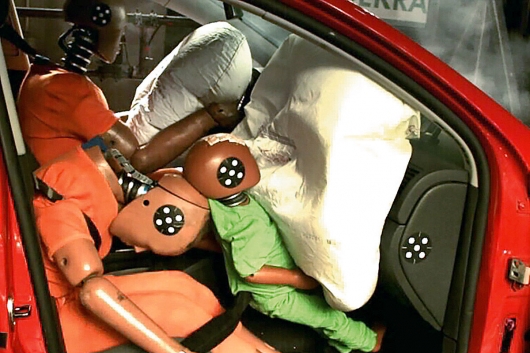
In the test dummy sitting on his knees, was an imitation of the 12-year-old child. Despite the small impact velocity, a children’s dummy rebounded into the dashboard. So in the event of an accident the hands of an adult will not keep the baby. The verdict of a surgeon: this kind of accident at low speed can kill a child.
Mistake # 2: weak tightening of the belts of the child seat
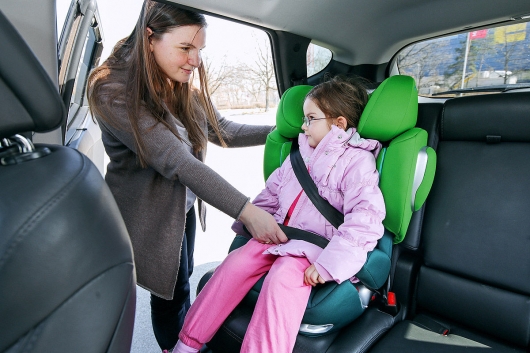
Unfortunately, children often loose the safety belt in a child seat. For example, to interfere with the proper belt tension can interfere with a thick coat of the child. Remember that only firmly holding the straps and belts can provide adequate protection during an accident.
In each test the dummy was consistent with 3-year-old child. Each dummy was placed in child seat.

Only one dummy was placed in a children’s armchair of group 1, but he was wearing exaggerated clothing that influenced the stretch of the seat belts (child seats, designed for children aged 9 months. to 4 years and weighing from 9 to 18 kg) and the other dummy was specifically placed in the child seat of the group 2/3 (child seats, designed for children aged 3 to 12 years and weighing from 15 to 26 kg).
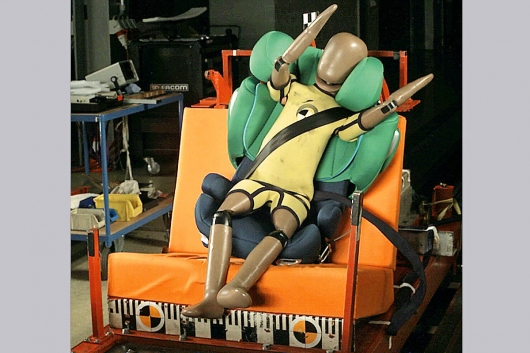 In the end, due to the small height and weight dummy, planted not quite in that chair, struck in imitation of crash’s head. A mannequin in his clothes hit his head on the front seat.
In the end, due to the small height and weight dummy, planted not quite in that chair, struck in imitation of crash’s head. A mannequin in his clothes hit his head on the front seat.
In both cases, the real crash, the child may obtain serious injuries.
Mistake # 3: a child too big for seat

It often happens that a child transported in the car seat, which is too small for him (the child grew from a small child seat). To show what happens when such a carriage with a child in Germany was conducted a crash test in which the child seat of group 1 (child seats, designed for children aged 9 months. to 4 years and weighing from 9 to 18 kg) put the dummy representing a six year old child.

As a result of collision the seat belt holds the child partially. But there is a huge offset. In the end, the head and feet of the child are too vulnerable.
In addition the test revealed significant strain on the neck. In this accident there is a threat of injury to the cervical vertebrae. In the worst case there is a risk of traumatic brain injury.
Mistake # 4: child too small for seat
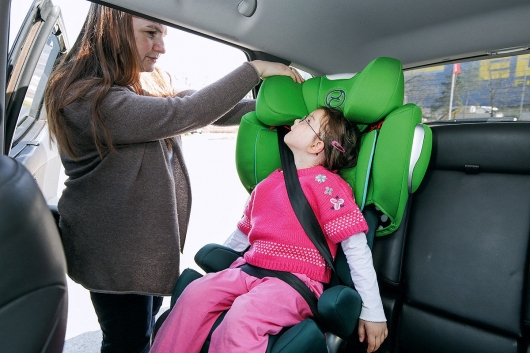
This is the opposite mistake that parents often make, putting too a young child in a large child seat. It also proved a test conducted by AUTO TEST. So, in the child seat category 2/3 (child seats, designed for children aged 3 to 12 years and weighing from 15 to 26 kg) were planted on a little manikin, which is a 1.5 year old child.
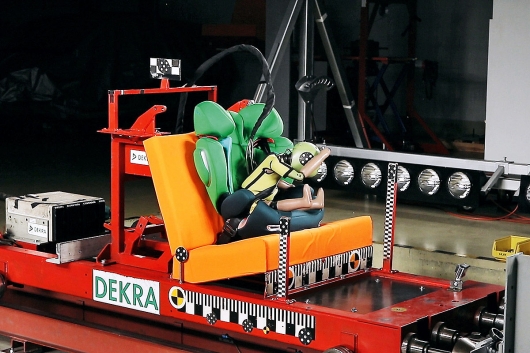
As a result of collision of the vehicle at a speed of only 50 km/h the dummy because of unreliable fixing of the lower back (lumbar tightness of the belt is insufficient due to the small size of the dummy) at the moment of impact began to shift to the rotational motion. As a result, in the event of a real crash a child sitting in too big a child seat, you may get a significant injury.
Mistake # 5: improper installation of the seat based on the Isofix mounting

Incorrectly installed seat with an Isofix anchorages system can also have severe consequences for the child in case of an accident.

In the test conducted by the AUTO TEST, it was found that incorrect installation of the child seat with the Isofix system when the strike occurs, the rotational movement of the seat and the child. The traction forces acting on the head, very high. Also high and the vertical acceleration acting on the chest area. This can lead to serious injuries to the cervical vertebrae.
Mistake # 6: open clips on the straps of the child seat
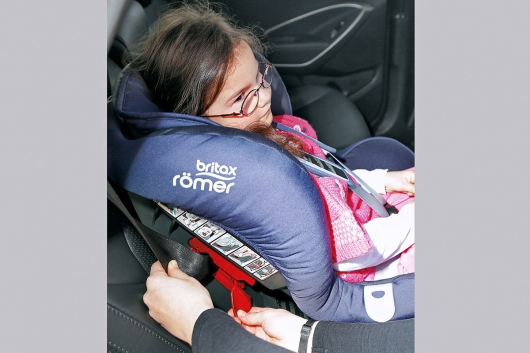
Open the clamps to the straps – another danger for children during their journey in the car in a child seat.
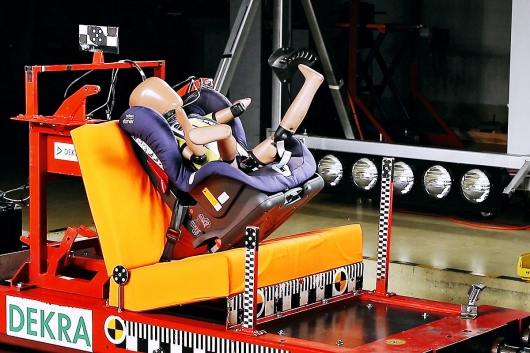
Tests have shown that when opening the seat belt, which should hold child seat, seat back moves forward too far, causing the child to get a head injury, hitting the wall of the front seat of the car.
Mistake # 7: airbag is not disabled
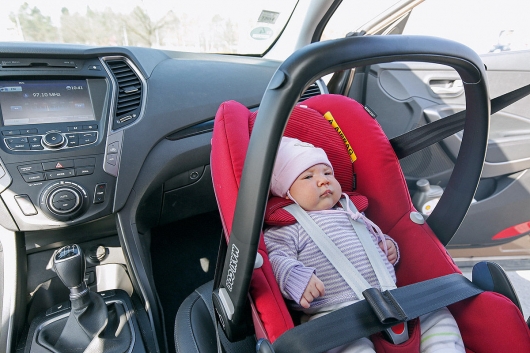
Basically, this error applies to child seats that are installed when transporting children on the front passenger seat. Unfortunately, parents very often when you install a child seat in the front seat forget to deactivate the front passenger airbag.

However, the test conducted by German specialists, gave a surprising result. Child even with the included airbag will not receive life-threatening injuries. This is despite the fact that during the impact triggered the airbag, which carries risks for the child in a child seat in the front seat.
However, according to experts, the positive result of this test says that when transporting a child in a child seat in the front seat don’t need to disable the passenger airbag. The fact is, in some cases, accidents of this kind, the impact of the airbag on a small child sitting in a child seat in the front seat can be much worse than in the tests. So each driver is obliged to learn by heart that when you install a child seat in the front seat, be sure to deactivate the front airbag if the car has no automatic shut-off cushion.
